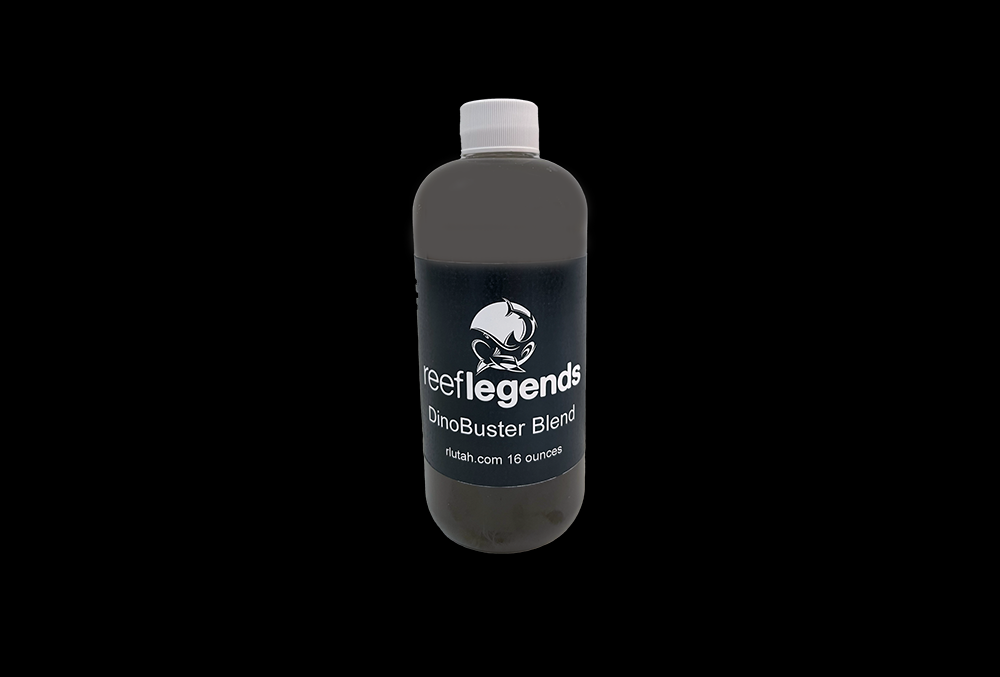
Beating dinoflagellates with diatom phytoplankton and silicate water
Share
When it comes to combating harmful dinoflagellates in reefing environments, utilizing a blend of diatom phytoplanktons can be a powerful and effective solution. Diatom phytoplanktons such as Pheaodactylum tricornutum, Thalassiosira weissfloggi, and Chaetoceros calcitrans have been shown to outcompete dinoflagellates, ultimately leading to a healthier reef ecosystem.
What are diatom phytoplanktons?
Diatoms are a type of algae that are characterized by their unique cell walls made of silica. These phytoplanktons are known for their ability to photosynthesize and produce oxygen, playing a crucial role in the marine food chain. Diatoms come in various shapes and sizes, with some species being more effective at outcompeting harmful algae like dinoflagellates.
How do Pheaodactylum tricornutum, Thalassiosira weissfloggi, and Chaetoceros calcitrans help?
Pheaodactylum tricornutum, Thalassiosira weissfloggi, and Chaetoceros calcitrans are diatom phytoplanktons that have been studied for their ability to inhibit the growth of dinoflagellates. These diatoms can outcompete dinoflagellates for essential nutrients, light, and space, ultimately reducing the population of harmful algae in the ecosystem.
Benefits of using a blend of diatom phytoplanktons
Research has shown that using a blend of diatom phytoplanktons can be more effective in combating dinoflagellates compared to using a single species. By combining different diatom species with complementary traits, the overall competitive advantage against dinoflagellates is enhanced, leading to a more sustainable and balanced aquatic environment.
Overall, the use of diatom phytoplanktons such as Pheaodactylum tricornutum, Thalassiosira weissfloggi, and Chaetoceros calcitrans can be a powerful tool in the fight against harmful dinoflagellates. By leveraging the natural competitive abilities of these diatoms, it is possible to promote a healthier and more resilient reef ecosystem.
Each strain has unique properties to help combat dinoflagellates. Thalassiosira weissfloggi, has the ability to suppress cell growth of other species.
How do diatoms help combat dinoflagellates?
When diatoms are introduced into an environment where dinoflagellates are present, they can outcompete these harmful organisms for resources and nutrients. Diatoms are highly efficient at utilizing available resources, which can help suppress the growth of dinoflagellates and prevent harmful algal blooms.
Why is silicate water important?
Silicate is a key nutrient for diatoms, as they use it to build their silica shells. By ensuring that the water contains an adequate amount of silicate, you can support the growth and proliferation of diatoms, which in turn can help control dinoflagellate populations.
Studies have shown that the addition of silicate to reef aquariums can promote the growth of diatoms and reduce the abundance of dinoflagellates, leading to a more balanced and healthy aquatic ecosystem.
Amount of silicate water to dose & strength
Dosing will depend on the strength of silicate water (waterglass) you buy. For this article lets go over dosing our brand of silicate water (18%) ratio 1 ml per 30 gallons of aquarium water volume.
When dosing silicates its extremely important to test silica levels in the aquarium via a test kit, Red Sea, Salifert or Hanna checkers and check ever 3-7 days. Dosing silica to your aquarium will cause a snow effect in the display.
Dose in a high flow area, dilute silicate water in 300-500ml of RO/DI water before adding to your aquarium.
When dosing silicate water, try to maintain a silica level of 2-4ppm, watch your alkalinity as this level may spike, due to decreased consumption.
When using our silicate water the dosage recommendations are 0.8-1ml per 30 gallons to achieve a 2ppm silica level. If using a 40% water glass solution, use half the dose recommended.
Test kits may provide false readings when dosing silicate water. Failure to dilute silicate water will cause it to bind in saltwater resulting in lower silica levels. The white snow effect is magnesium being precipitated out and will not harm fish or change your magnesium levels.
When dosing silicate water, alkalinity uptake from corals may slow down, its important to check all your levels daily and around the same time after dosing silicate water to the aquarium. Dosing silicate water the same time of day will also help with readings. Testing alkalinity, calcium and magnesium should happen before dosing the next round of silicate water.
Adding beneficial bacteria from Hydrospace
In conjunction of adding phytoplankton and silicate water to your reef aquarium, dosing/using Hydrospace PNS Probio and substrate sauce may help restore your reef aquarium to healthy beneficial ecosystem.
PNS Probio is a live culture of purple non sulfur bacterium that is a sequesters of excess nutrients and organic wastes that can be fueling the growth of dinoflagellates, cyanobacteria and other nuisance algae.
Conclusion
By harnessing the power of diatom phytoplankton and ensuring that the water contains sufficient silicate, it is possible to combat dinoflagellates and prevent harmful dinoflagellate blooms. This natural and effective approach can help restore balance of reef aquarium environments and protect your marine life from the negative impacts of dinoflagellate overgrowth.
